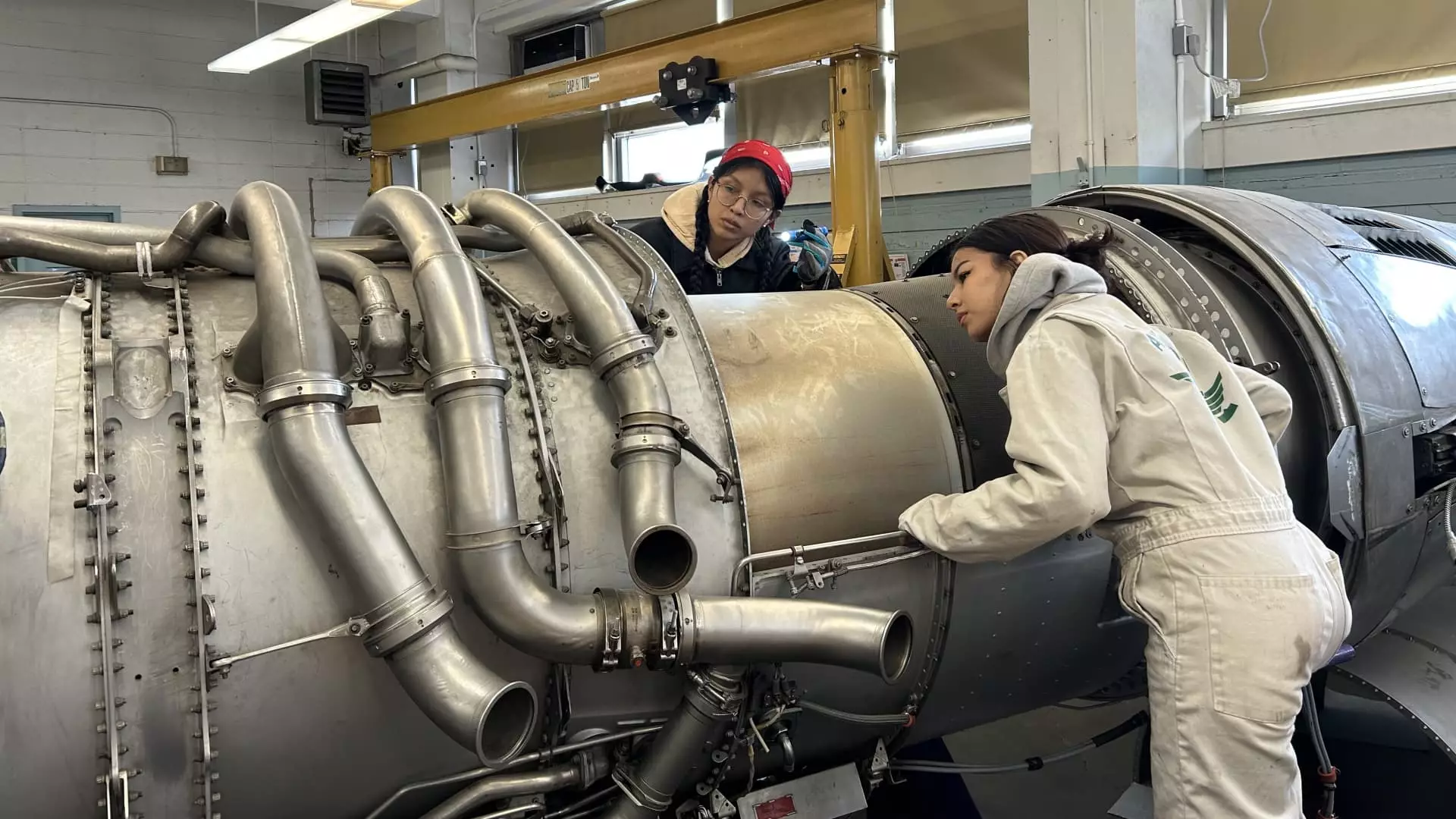In recent years, the aviation sector—a cornerstone of America’s economic landscape—has found itself staring down an impending crisis. The excitement of technological advancements and a budding industry post-pandemic seems overshadowed by a deeply concerning statistic: the average age of aircraft mechanics in the United States is inching towards an alarming 54. This factor, compounded by the fact that 40% of certified mechanics are over the age of 60, paints a dire picture for a field desperately needing fresh talent. According to a cooperative report from the Aviation Technician Education Council and consulting behemoth Oliver Wyman, the U.S. will face a shortfall of 25,000 aircraft technicians by 2028.
Ah, the irony! In a country that champions its manufacturing strength and technical know-how, how can such a gap exist? The answer lies in a misalignment of interest, perception, and career awareness among younger generations. While old-school manufacturing jobs often evoke images of monotonous assembly lines, the modern aviation workforce demands advanced skills and offers lucrative financial rewards. Yet, somehow, this message is failing to resonate with youth today.
Industry’s Misguided Focus on External Attractions
The legacy of industrial jobs making headlines is perhaps part of the problem. Many traditional manufacturing jobs have shrunk or moved abroad, leading to skepticism about the longevity of manufacturing careers. With high-profile sectors like tech capturing the imagination of the upcoming generation, a significant shift is needed to realign perceptions of what a career in aviation truly means. Companies such as GE Aerospace are trying to express a different narrative. They highlight the need for technicians capable of operating complex machinery and utilizing innovative materials. However, beyond just a narrative, a genuine cultural overhaul is urgently needed.
The implications of the worsening talent pipeline extend beyond aircraft mechanics. The industry is reeling from shortages not only among technicians but also among critical roles like air traffic controllers. The unfortunate reality is that a diminishing workforce can hinder airline growth and pose safety risks—two issues that should undoubtedly attract the attention of policymakers.
Monetary Incentives: Are They Enough?
Focusing on wages alone as a remedy for the labor shortage may not be the most viable solution. Although salaries are rising—offering pay between $80,000 and $90,000 for technicians—this uplift seems inadequate when we consider the enormous hurdles to entering the field. The road to earning an FAA license is laborious and expensive, which makes the high salaries less appealing to some prospective recruits. Sarah MacLeod of the Aeronautical Repair Station Association warns that without a concerted effort to attract new workers, a ripple effect will impact various sectors of the economy—an existential threat many seem to overlook.
Young aspirants like Sam Mucciardi, a senior at Aviation High School in Queens, offer a glimmer of hope. His enthusiasm for wrenching on aircraft illuminates the potential for attracting young talent willing to break the traditional mold. However, stories like his need amplification and visibility. The industry owes it to capable, motivated students to paint the aviation sector as an exciting, innovative field ripe with opportunity—not a stagnant relic of the past.
In a world increasingly driven by technology, the aviation sector can no longer afford to distance itself from potential recruits. For example, American Airlines has recently expanded outreach efforts to include younger students, underscoring the importance of early engagement in crafting a more robust talent pipeline. Unfortunately, awareness alone isn’t enough; the aviation industry must make this career path not just enticing but also accessible.
The Future is High-Tech and Must Be Inclusive
Is it too late to change the narrative around aviation careers? Not quite. However, any campaign to bolster interest must highlight the transformative, high-tech nature of modern aircraft manufacturing and technician roles. Laser-guided machines, precision engineering, and cutting-edge materials characterize today’s industry—dismissing aviation careers as “industrial age” jobs does a disservice to the sector’s potential and appeal.
More importantly, these jobs must be positioned as inclusive paths that diversify the workforce. Initiatives to include underrepresented groups can yield a richer talent pool and foster innovation. New voices and backgrounds bring fresh ideas that are vital for solving today’s complex challenges, both in manufacturing and aviation at large.
The desire to attract younger talent is not merely a matter of filling jobs; it’s about ensuring the industry’s survival and ongoing vibrancy. The aviation workforce is at a crossroads, faced with the daunting challenge of recruiting skilled workers while navigating a rapidly evolving technological landscape. Embracing this challenge head-on will determine the trajectory of the aviation industry in the coming decades.


Leave a Reply